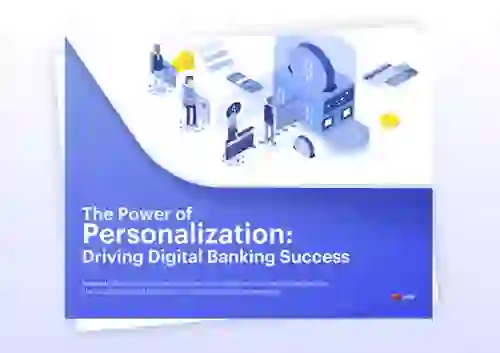
Learn more

This blog post was adapted from our white paper The Power of Personalization: Driving Digital Banking Success. Download it for free now!
It may not always seem that way, but many banks were early adopters of technologies that enabled the development of digital banking services. By 2000, a majority of banks in advanced economies offered some form of online banking, although by modern standards these services were slow and very limited. Today, however, many digital banking services are much faster, more secure, and increasingly sophisticated, with payment and other banking functions instantly accessible via a huge range of connected devices. These capabilities are now complemented by a powerful array of other online financial services, including savings, investments, mortgages, insurance, and account aggregation.
The missing puzzle piece: personalization
That sounds great, right? But one critical element of the ideal digital banking service is still too often missing: genuine personalization. Banks may offer increasingly well-crafted products and useful services, but in many cases the customer experience fails to reflect an individual’s circumstances, choices, or previous interactions with the bank. Banks still have a long way to go in order to tailor products, services, and customer interactions to match their users’ specific needs and preferences.
That is a real problem in a world where software companies are disrupting industry after industry, in large part because they offer more personalized services than their legacy counterparts. Growing numbers of consumers are now accustomed to interacting with a wide variety of vendors offering fast and reliable online services that incorporate some degree of personalization, from retailers to on-demand streaming services. In that context, consumers may find it difficult to understand why their bank cannot provide the same level of customization. While other businesses treat consumers as individuals and not account numbers, too many banks still make their customers feel more like the latter.
Rethink your data layer strategy to enable personalization
Obviously, banks and financial service institutions have access to a rich trove of customer data, and it appears that banks and fintech companies that use this data to successfully personalize their digital services enjoy significant commercial benefits. In 2019, research by KPMG based on the views of 84,000 consumers in 20 countries revealed a clear correlation between personalization and brand loyalty in 18 of those markets, including the U.S., the UK, Australia, Brazil, France, Germany, and Italy. Consumers consistently awarded higher ratings to banks with the best personalization capabilities.
But banks can build desirable personalized services only if they rethink their data layer strategies. They need data infrastructures able to provide the power, speed, flexibility, and scalability to draw useful information out of enormous volumes of customer data—and turn that information into personalized offers and interactions. Achieving this for a massive customer base requires the ability to respond quickly to very large numbers of processing requests.
So, what must financial institutions do in order to rethink their data layer strategies to enable personalization and reap its benefits? Find out in our new white paper, The Power of Personalization: Driving Digital Banking Success, which explains what institutions need to consider in their data architecture in order to successfully deliver the personalization that today’s customers expect. You’ll also learn how Redis Enterprise delivers the performance, scalability, and security required to enable the future of digital banking.
And if you’re looking to learn more about the importance of the data layer in the financial-services industry, check out: